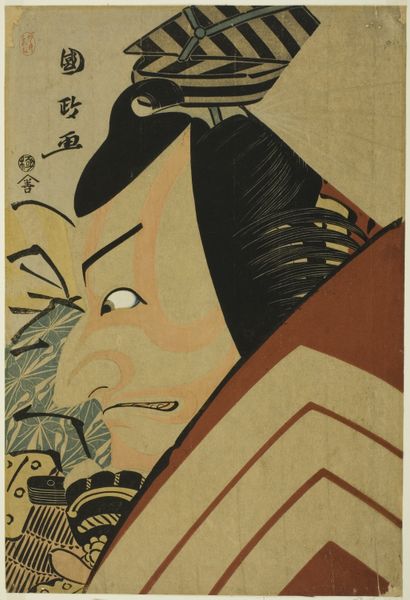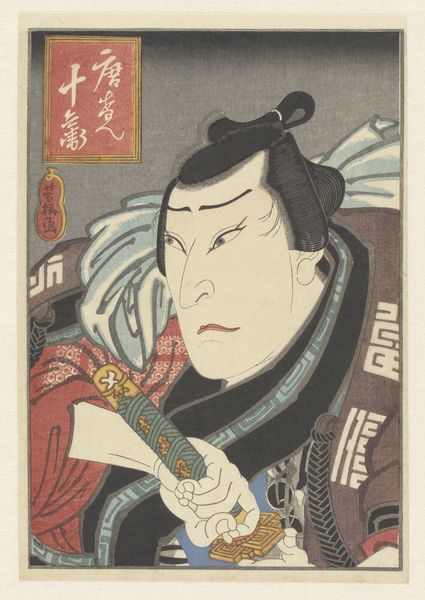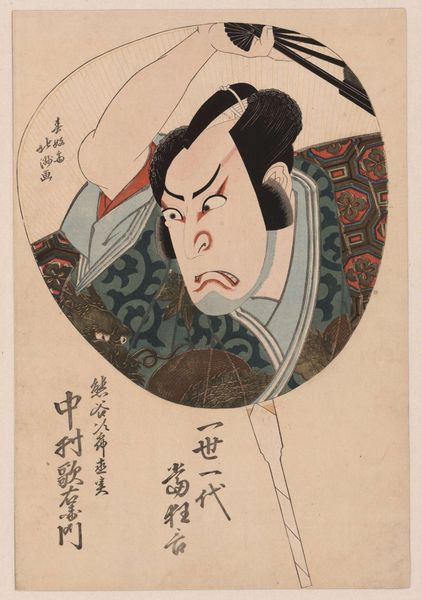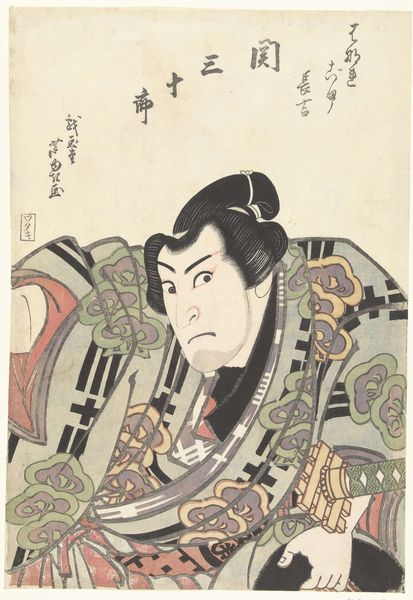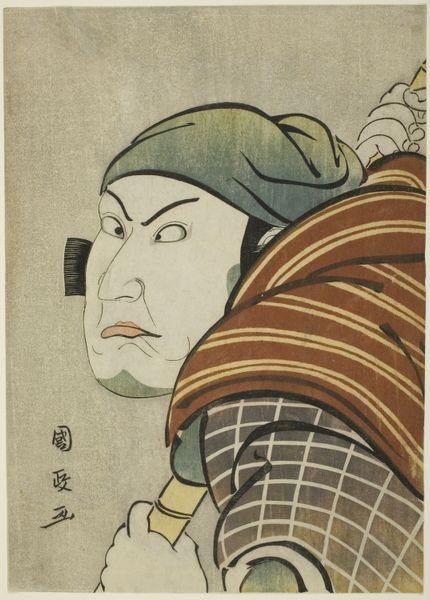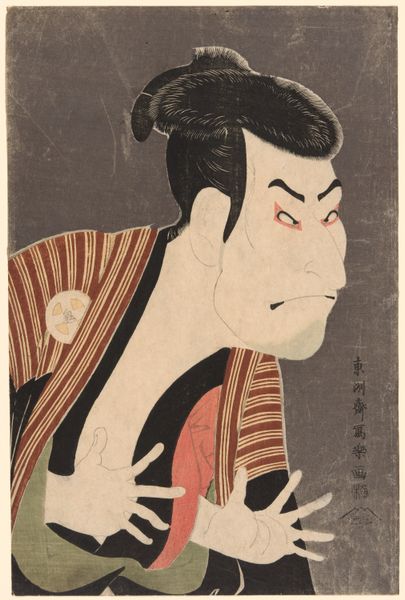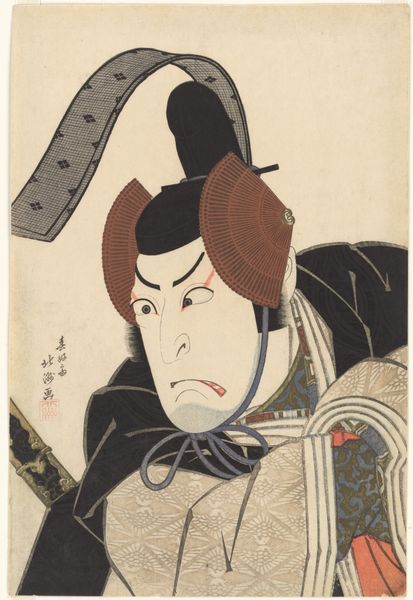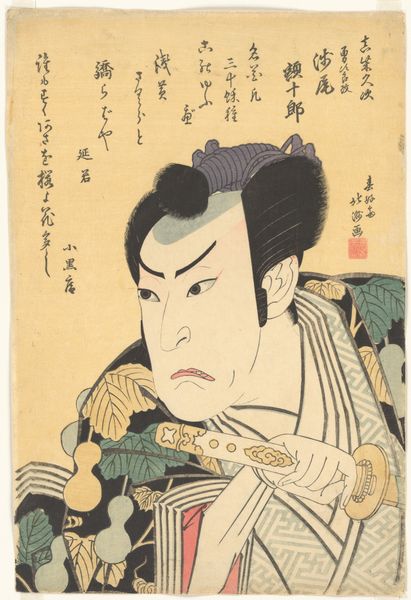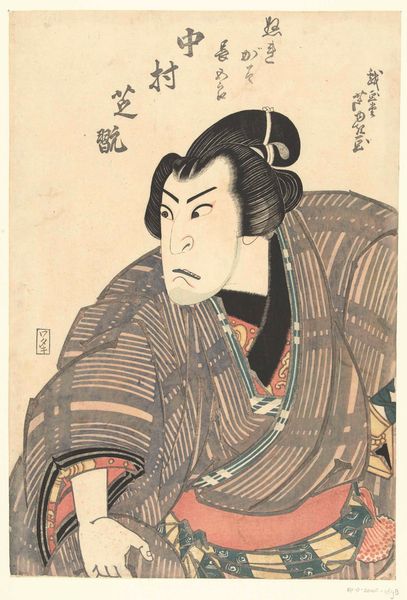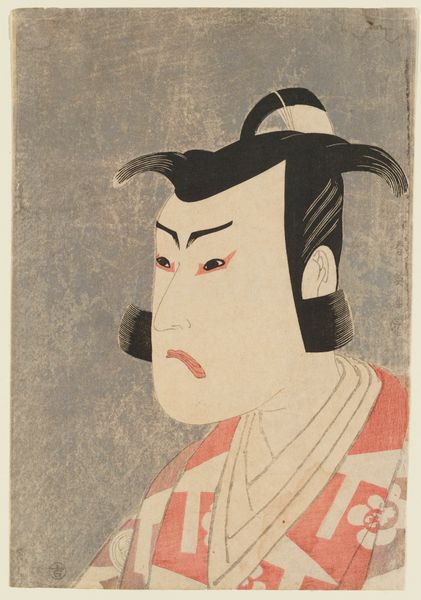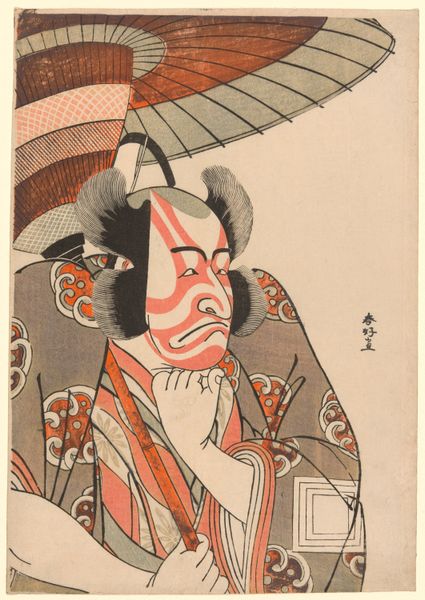
"Large Head" Portrait (Okubi-e) of the Actor Iwai Hanshiro IV as Akita Jonosuke Yoshikage in a "Shibaraku" Role, from the play Mieiko Nori no Hachi no Ki (Memorial Service for St. Nichiren: A Model of "The Potted Trees"), Performed at the Kawarazaki Theater in the Eleventh Month, 1791 c. 1791
0:00
0:00
#
portrait
# print
#
caricature
#
asian-art
#
caricature
#
ukiyo-e
Dimensions: 32.3 × 22.5 cm (12 3/4 × 8 7/8 in.)
Copyright: Public Domain
Curator: This Ukiyo-e woodblock print, dating from about 1791, presents us with a large head portrait of the actor Iwai Hanshiro IV. It was created by Katsukawa Shun'ei and captures the actor in the role of Akita Jonosuke Yoshikage in a "Shibaraku" play. Editor: Immediately, the graphic quality jumps out at me, especially that mask-like makeup. It's unsettling, like a strange clown, yet commanding. What does that expression convey to you? Curator: Well, the medium is key here. Woodblock printing allowed for relatively mass production, spreading these images throughout Edo-period Japan. This image also represents not just a person, but a figure from a play performed at the Kawarazaki Theater, reflecting the actor’s performance and embodying a cultural commodity for consumption. Editor: Cultural commodity for consumption. A rather cold assessment for something so… alive? Look at the line work – it's almost vibrating. And the contrast of the soft pink with the stark black, almost daring. The mouth pulls downwards with an expression of utter dejection, perhaps, in that caricature. Is that reading too much into it? Curator: Caricature wasn't just about likeness, but also about promoting a certain understanding, influencing perceptions within that specific theatrical and social context. The actor's success, the play's popularity, and, by extension, the print's value all depend on the wider network of performers, artisans, patrons, and audiences. Editor: So, we have here not simply an image, but an artifact embedded in a specific web of social and material conditions, where its creation, circulation, and reception shape its meaning. It makes me think, what happens to all of that out of time? Does that inherent theatrical energy just linger on the paper? Curator: Perhaps some aspects endure, but the specifics are irrevocably altered. The play itself exists now in fragments—this image a lingering trace of it all. Editor: Which just gives it a touch of immortality, doesn’t it? Even flattened into wood and ink. Still… captivating.
Comments
No comments
Be the first to comment and join the conversation on the ultimate creative platform.
